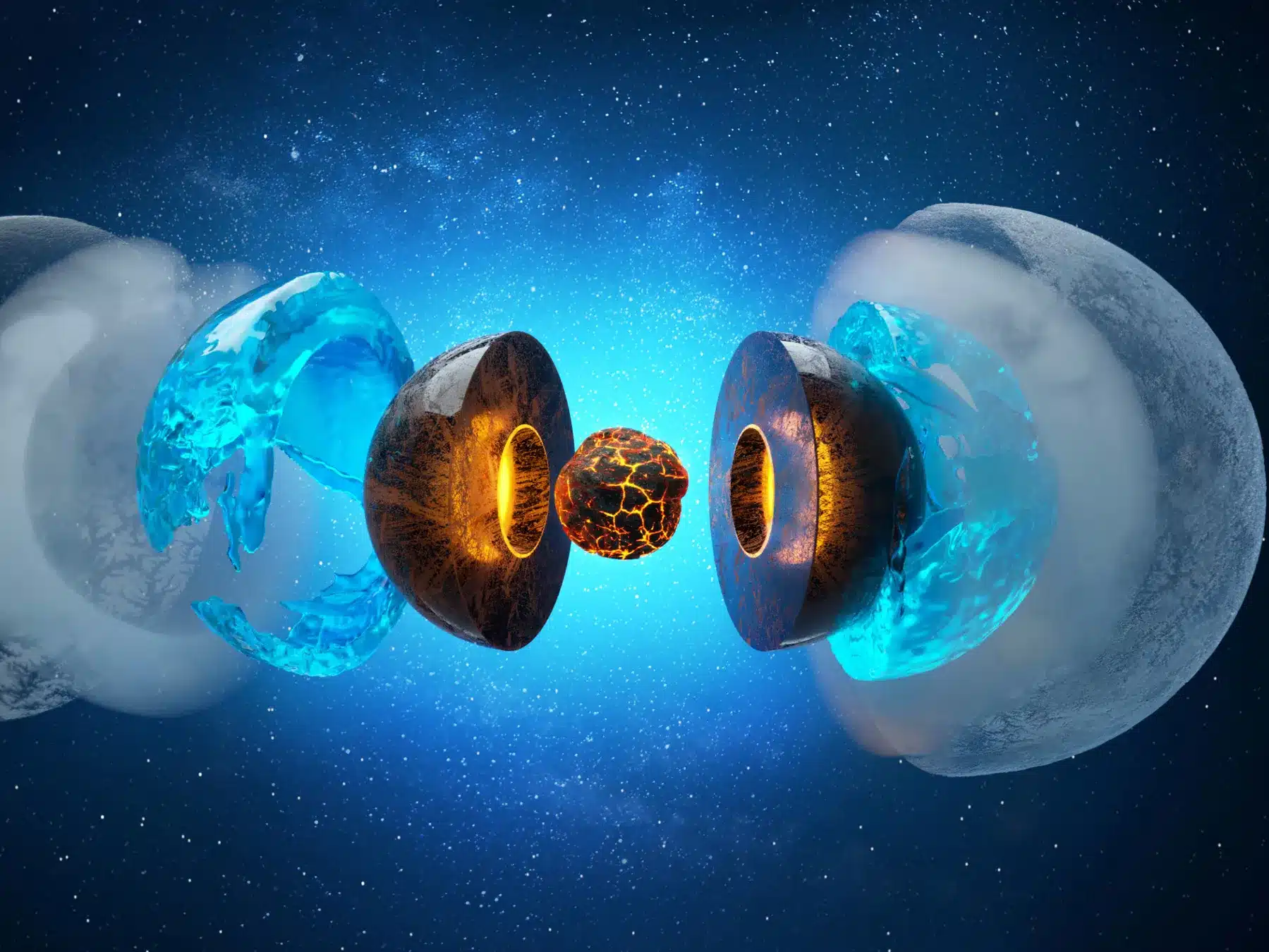Crystalline Ice Detected in Space: Groundbreaking Research Unveiled

Water ice, a common feature on many celestial bodies in the outer solar system, has long been thought to exist in an amorphous state. However, a groundbreaking study conducted by scientists from University College London and the University of Cambridge reveals that this ice may actually contain tiny crystalline structures. Through advanced computer simulations and X-ray tests, researchers found that up to 25% of the ice could be crystalline, challenging the long-standing belief that space ice is entirely structureless.
Simulations Reveal Hidden Nanocrystals
The research team utilized computer simulations to investigate the structure of space ice. They cooled virtual water to -120 °C at various rates to create model “ice cubes.” The results showed a range of structures, from fully amorphous to partially ordered. Notably, the simulations indicated that structures with approximately 16-19% of their molecules arranged in tiny crystal clusters closely matched existing X-ray data for low-density ice. In another simulation, thousands of nanometer-sized ice grains were compacted, and the remaining water molecules were randomized. This method produced ice that was about 25% crystalline while still replicating the known diffraction pattern.
In addition to simulations, the researchers conducted laboratory experiments to create actual low-density amorphous ice through vapor deposition and gentle compression. When these samples were gradually warmed to induce crystallization, they exhibited a “memory” of their formation process, further supporting the findings from the simulations.
Implications for Planets and Origins of Life
These findings provide valuable insights into the atomic structure of the most prevalent form of ice in the universe, which is crucial for understanding planet and galaxy formation. The presence of partly crystalline ice could also influence theories regarding the origins of life. Since this type of ice has less internal space to trap organic molecules, it may be a less effective medium for transporting amino acids and other prebiotic compounds. Nevertheless, Dr. Davies, one of the researchers, pointed out that pockets of fully amorphous ice still exist. This means that cosmic dust grains and cometary ices could continue to contain organic materials in those disordered regions, preserving the potential for life’s building blocks in the universe.
Future Research Directions
The implications of this study extend beyond our understanding of ice in space. Future research may focus on how these crystalline structures interact with other cosmic materials and their role in the formation of celestial bodies. Understanding the properties of ice in various states could lead to new insights into the conditions necessary for life to emerge elsewhere in the universe. As scientists continue to explore the complexities of space ice, the findings from this research will likely influence ongoing studies in planetary science and astrobiology, paving the way for further discoveries about the origins of life and the composition of our solar system.
Observer Voice is the one stop site for National, International news, Sports, Editor’s Choice, Art/culture contents, Quotes and much more. We also cover historical contents. Historical contents includes World History, Indian History, and what happened today. The website also covers Entertainment across the India and World.
Follow Us on Twitter, Instagram, Facebook, & LinkedIn

